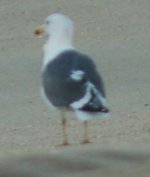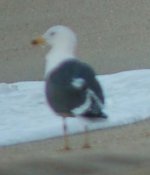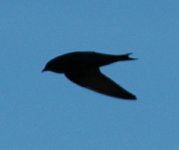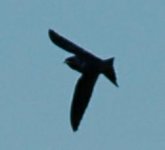Terry O'Nolley
Cow-headed Jaybird
The adult gull - I have no idea. Except for the really obvious ones they simply baffle me. I thought the pictures were in focus  I forgot they eye color and the leg color in the pic looks yellow - which would rule out Greater Black-backed gull.
I forgot they eye color and the leg color in the pic looks yellow - which would rule out Greater Black-backed gull.
The swallow, on the other hand, I think might be a Purple Martin. It was quite dark - both above and below and does have a forked tail (which I think rules just about everything else out). But, because of the lighting, I only saw "dark" never the metallic deep purple sheen of Purple Martins I have seen in the past.
Any ideas?
The swallow, on the other hand, I think might be a Purple Martin. It was quite dark - both above and below and does have a forked tail (which I think rules just about everything else out). But, because of the lighting, I only saw "dark" never the metallic deep purple sheen of Purple Martins I have seen in the past.
Any ideas?
Attachments
Last edited:







